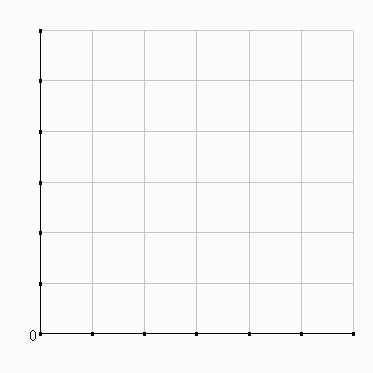| See worksheet on resource productivity and SR costs: (Key) | |
 |
 |
|
Friday, March 08, 2013 |
B. Costs for the
firm
1. Short-run costs
b.
Resource productivity and short-run costs
Summary:
MC = PL/MPL:
MPL
falls => MC rises
AVC = PL/APL:
APL
falls => AVC rises
| Application: IBM Pisces 370/68
series computer: TFC = $30M ? AFC = $60K ? ATC = $500K ? AVC = $440K? =
constant Graph MC, AVC, ATC |
 |
2. Long-run costs
Now: all inputs are variable
SR productivity concepts aren't meaningful now.
Recall: TC = PL.L + PK.K
If we fix TC at TCo, TC becomes a constraint just like BL constrained consumers
Helpful to be able to depict this in input space, to combine it with isoquants
When we do this, we get an isocost line: An isocost line tells us the combinations of inputs which can be purchased for the same total cost.
TCo = PL.L
+ PK.K =>
PK.K = TCo - PL.L
=>
K = TCo/PK - (PL/PK).L
Intercept = affordable K w/L=0
Slope = PL relative to PK
| Example: TC = 300 PL = 60; PK = 20 300 = 60L + 20K K = 300/20 - (60/20)L K = 15 - 3L Opp.cost of 1L = 3K ? +PL => steeper or flatter Co? |
 |
Along TCo,
DTC = 0 =>
vary L&K to keep TC the same =>
PKDK = PLDL =>
|-DK/DL| = PL/PK
size of slope = PL relative to PK
III. Theory of the firm:
production and costs
C. The producer's optimum
Learning objectives: Use productivity-cost relationships to recommend cost-reducing input adjustments. Diagram and interpret the tangency condition for a cost-minimizing optimum. Solve cost-minimization problems.
We can look at a firm's decisionmaking from 2
directions:
Given Co: How much can the firm produce with that budget--strictly
analogous to consumer theory
--Max Q given Co, PL, PK
Not really the typical situation
Alternatively and more common:
Given an output level to produce: What is the minimum cost of producing
that output
--this is the problem we'll work on. It's a problem which must be
solved for any Q which the firm produces.
--rather than start with some BL and move Uo's around to reach max.,
start with some Qo and move TCo around to find min. TC.
--but equil. will look the same
--we'll want to then figure out just how much the final TC is.
Comparing productivity (value) and cost
? is this firm at a production
optimum? |
 |
MRTS > PL/PK
=> relative prod'y of another L exceeds its relative cost
=> hire L, fire K.
Substitution
process: +L, -K --> MRTS falls.
Continue until MRTS = PL/PK
Note the
tangency
condition:
Relative productivity of labor = its
relative cost
| MPL/MPK | · | MRTS | = | PL/PK | |
| Slope of Qo | = | Slope of TCo | |||
Consider Least-cost condition worksheet